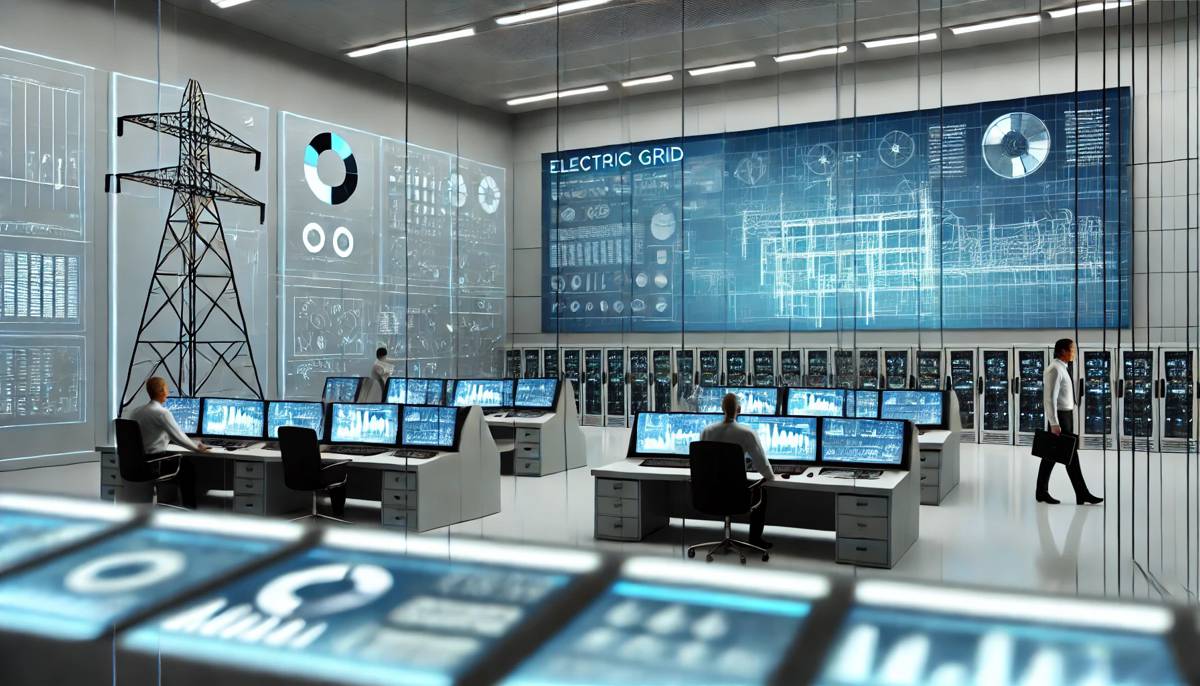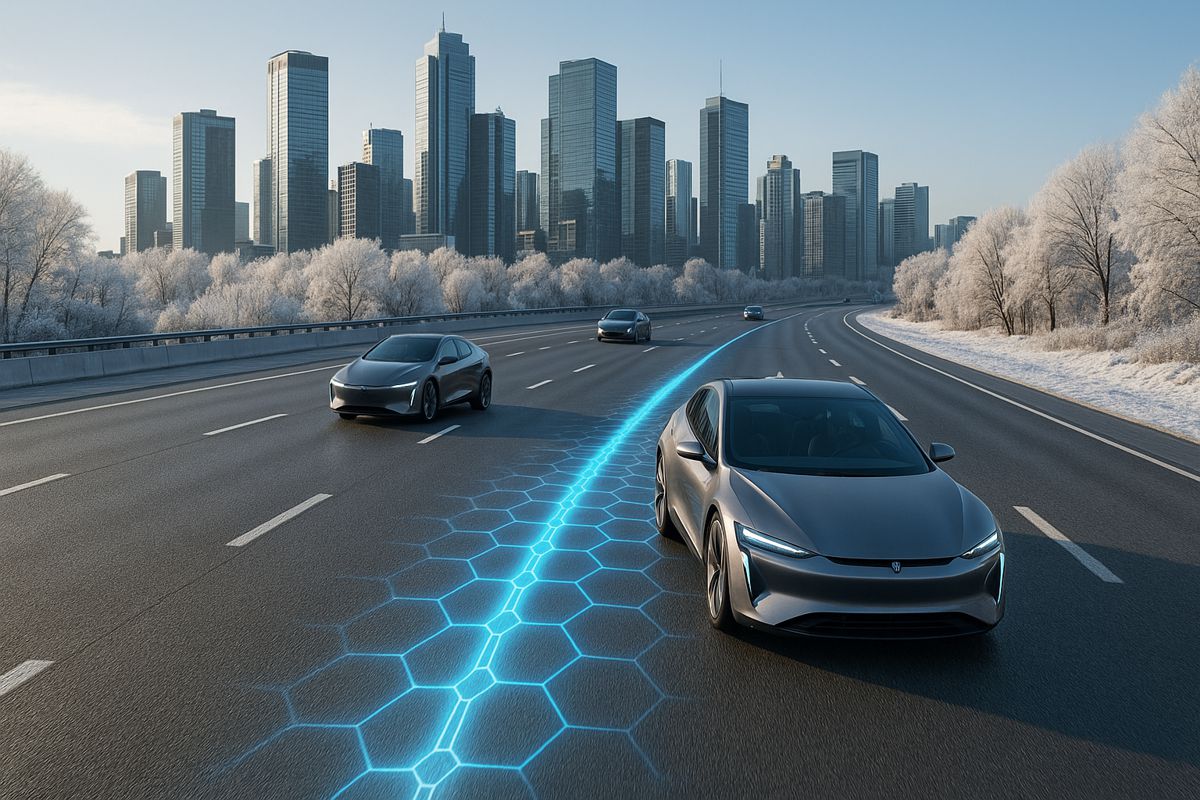Electric Grid that thinks ahead set to revolutionise Power Management
As the world grapples with the complexities of transitioning to sustainable energy, the need for a more adaptable, intelligent, and resilient electric grid has never been more pressing.
The traditional grid, long dependent on a centralised network of coal, gas, hydro, and nuclear power stations—is undergoing a seismic transformation. Renewables, decentralised power sources, and rising demand are redefining how electricity is generated, distributed, and consumed.
In the face of these challenges, researchers at the Pacific Northwest National Laboratory (PNNL) are leading the charge towards a “smart grid” powered by artificial intelligence (AI) and machine learning (ML), but with a critical twist—keeping human expertise firmly in the loop.
Adapting to a Complex, Evolving Grid
For over a century, the electric grid was a relatively simple system, with centralised power plants generating electricity and distributing it via straightforward transmission networks. However, today’s grid is far more intricate, driven by multiple factors such as the integration of renewable energy sources, the electrification of transport, and the rise in digital and industrial demands. These new dynamics have introduced layers of complexity that make the management of the grid a daunting task.
As Yousu Chen, a power system modelling and simulation expert at PNNL, notes: “Electric utility operators are looking for tools that help them understand the current system status, predict what will happen in the future, and then present recommendations for the actions they need to take.” Chen and his team have developed a comprehensive report outlining how AI and ML can enhance grid operations by providing real-time insights, predictive analytics, and automated decision-making support.
The Role of Machine Learning in Grid Modernisation
Machine learning, a subset of AI, is increasingly being recognised as a game-changer for grid management. Unlike traditional systems that rely solely on predefined rules, ML uses mathematical models, data, and pattern recognition to make decisions based on prior knowledge and real-time information. As power systems evolve, so do the models, learning continuously from new data to become more accurate and reliable over time.
However, the adoption of AI/ML in grid management isn’t without its hurdles. Utility companies are understandably cautious about integrating new technologies when any system failure could lead to catastrophic consequences. The concerns revolve around trust, accuracy, cyber threats, and the cost-effectiveness of these new systems. But PNNL’s research has offered practical solutions and guidance, helping utilities better understand how AI can be safely and effectively implemented.
Building Trust in AI-Powered Decision Making
One of the key challenges in adopting ML is building trust in the technology. In their research, PNNL scientists applied an ML algorithm to real-world data from the Eastern Interconnection, one of the largest power grids in the United States. The results were encouraging— the algorithm achieved an 85% confidence score in predicting grid behaviour. However, what was even more compelling was how this score improved when human experts were included in the loop.
PNNL’s innovative approach introduces what they call the “expert-derived confidence” (EDC) score. By allowing human experts to review and refine ML-generated recommendations, the accuracy of the predictions improves significantly. This collaborative human-machine model underscores that while AI can handle vast amounts of data at lightning speed, human judgment remains indispensable in critical decision-making processes.
Cybersecurity A Growing Concern
As AI and ML become more embedded in the grid, so too do the risks associated with cyber threats. The increasing digitalisation of grid infrastructure introduces potential points of vulnerability that malicious actors could exploit. Addressing this, PNNL researchers have developed anomaly detection algorithms designed to flag suspicious activities. These algorithms monitor data traffic and access patterns in real-time, enabling rapid responses to potential breaches.
A notable example of this is PNNL’s PowerDrone project, which uses AI techniques to safeguard cyber-physical systems like the power grid. By leveraging these advanced methods, utilities can bolster their defences against cyberattacks, ensuring a more resilient and secure power supply.
Enhancing Grid Reliability Through Advanced Modelling
Another crucial aspect of smart grid development lies in the adaptability and accuracy of computational models. Grid systems are dynamic, influenced by factors such as weather conditions, equipment health, and human interventions. Continuous learning and refinement are essential to keep these models relevant and effective.
Chen’s team has been exploring digital twin technology and adaptive models that simulate grid behaviour in response to various scenarios. These models predict vulnerabilities and suggest optimal responses, whether dealing with extreme weather events or equipment failures. For instance, PNNL’s Dynamic Contingency Analysis Tool (DCAT) helps utilities identify weak spots and mitigate cascading failures during crises. The insights provided by such tools can be invaluable in avoiding widespread outages and ensuring the grid’s stability.
The Investment Dilemma
Implementing a smart grid powered by AI/ML isn’t just about technology—it’s also about economics. Upgrading infrastructure, training personnel, and integrating intelligent systems require significant financial investment. Utilities need to weigh these upfront costs against the long-term benefits, which include improved efficiency, quicker response times, and better resource management.
Once in place, however, smart grids offer substantial returns. They can dynamically respond to fluctuations in energy demand, optimise energy distribution, and even pre-emptively tackle faults before they escalate into full-blown problems. As Chen aptly puts it: “We’re talking about a fundamental shift in how we operate the grid, moving from one centralised brain to a more decentralised approach that absorbs data from numerous sources and provides real-time recommendations.”
Local Control and Predictive Maintenance
What does this decentralised control look like in practice? Two of the most promising applications of AI/ML in grid management are demand prediction and fault detection.
- Demand Prediction: By analysing real-time data, ML can help forecast energy needs with far greater accuracy than traditional methods. This ensures better grid balancing, reduces waste, and ultimately leads to more stable energy prices. Over time, AI systems can identify consumption trends, allowing for smarter infrastructure investment.
- Fault Detection and Prevention: Sensors installed on key equipment can continuously monitor performance and flag potential issues before they lead to failures. PNNL is exploring AI-based approaches to enhance grid resilience against variable weather conditions, particularly in renewable energy systems like wind turbines. Such systems not only detect faults early but also propose optimised maintenance schedules, extending the lifespan of critical infrastructure.
Human-Machine Interaction
One of the lingering questions around smart grids is the role of human operators in an increasingly automated environment. While AI/ML systems can process information faster and more comprehensively than humans, their success hinges on seamless human-machine collaboration. PNNL’s research emphasises the importance of designing interfaces that keep operators informed, confident, and capable of overriding or refining automated decisions when necessary.
This blend of automation and human insight is crucial for managing the grid’s complexity, especially as renewable energy sources with intermittent outputs become more prevalent. By striking the right balance, utility operators can harness the power of AI while maintaining the oversight needed to prevent errors and optimise performance.
A Smarter, More Resilient Grid for the Future
The electric grid is at the dawn of a new era—one where AI, machine learning, and human expertise converge to build a more adaptive, reliable, and sustainable system. As the industry moves forward, PNNL’s research serves as a roadmap for utilities navigating this transformation.
By embracing these technological advancements while ensuring human judgement remains central, the grid of tomorrow will not only be smarter but more resilient against the challenges of the future.




















